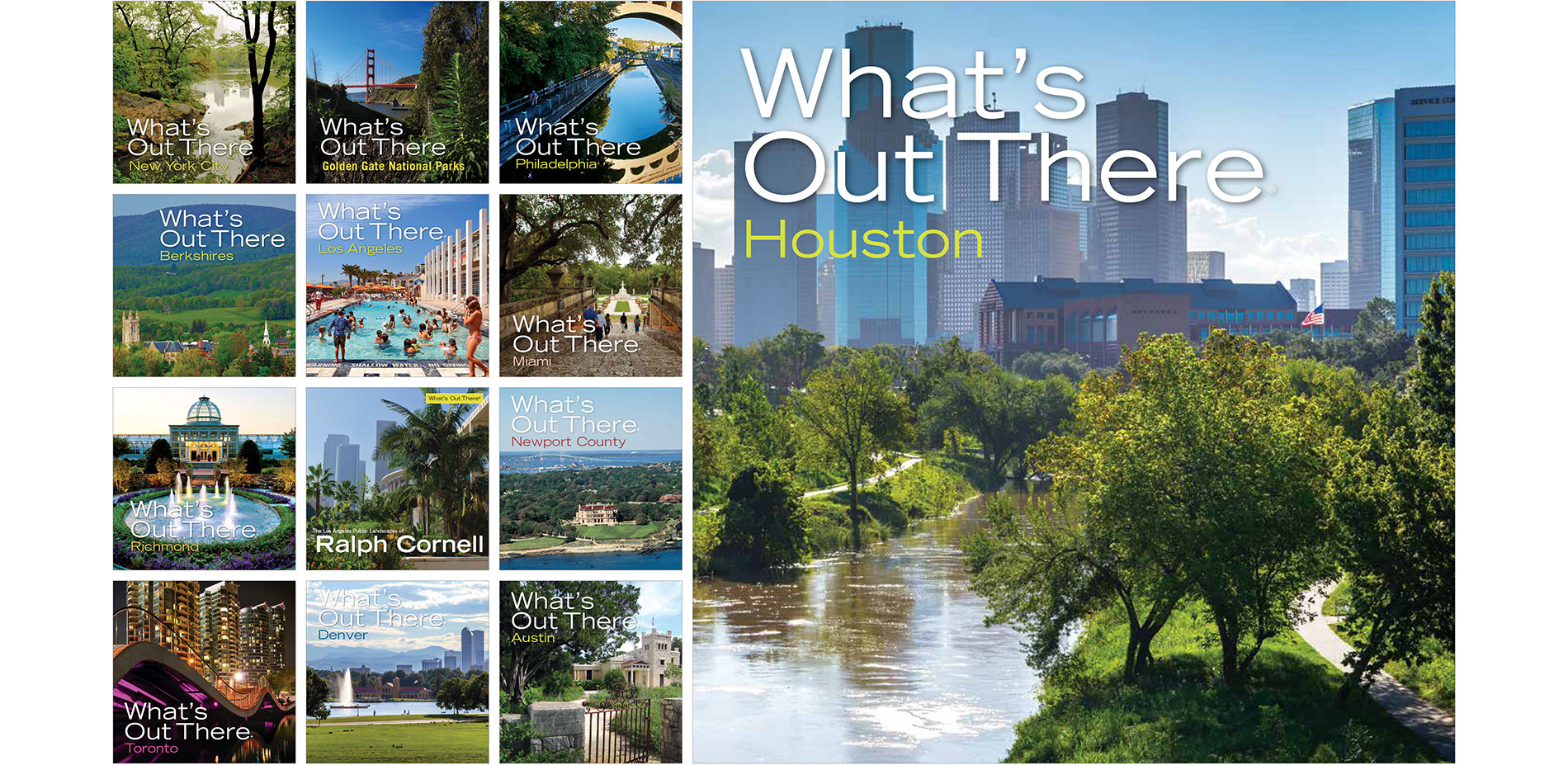
What’s Out There guidebooks are concise, richly illustrated publications that provide overviews about the design history of mostly U.S. urban areas; they include city maps plus 250-word essays and full-color photographs of each site. There are currently thirteen guidebooks.
Photo Credit: Charles Birnbaum; Barrett Doherty; Mark Oviatt, Oviatt Media
Media: Please submit high-resolution image requests to images@asla.org.
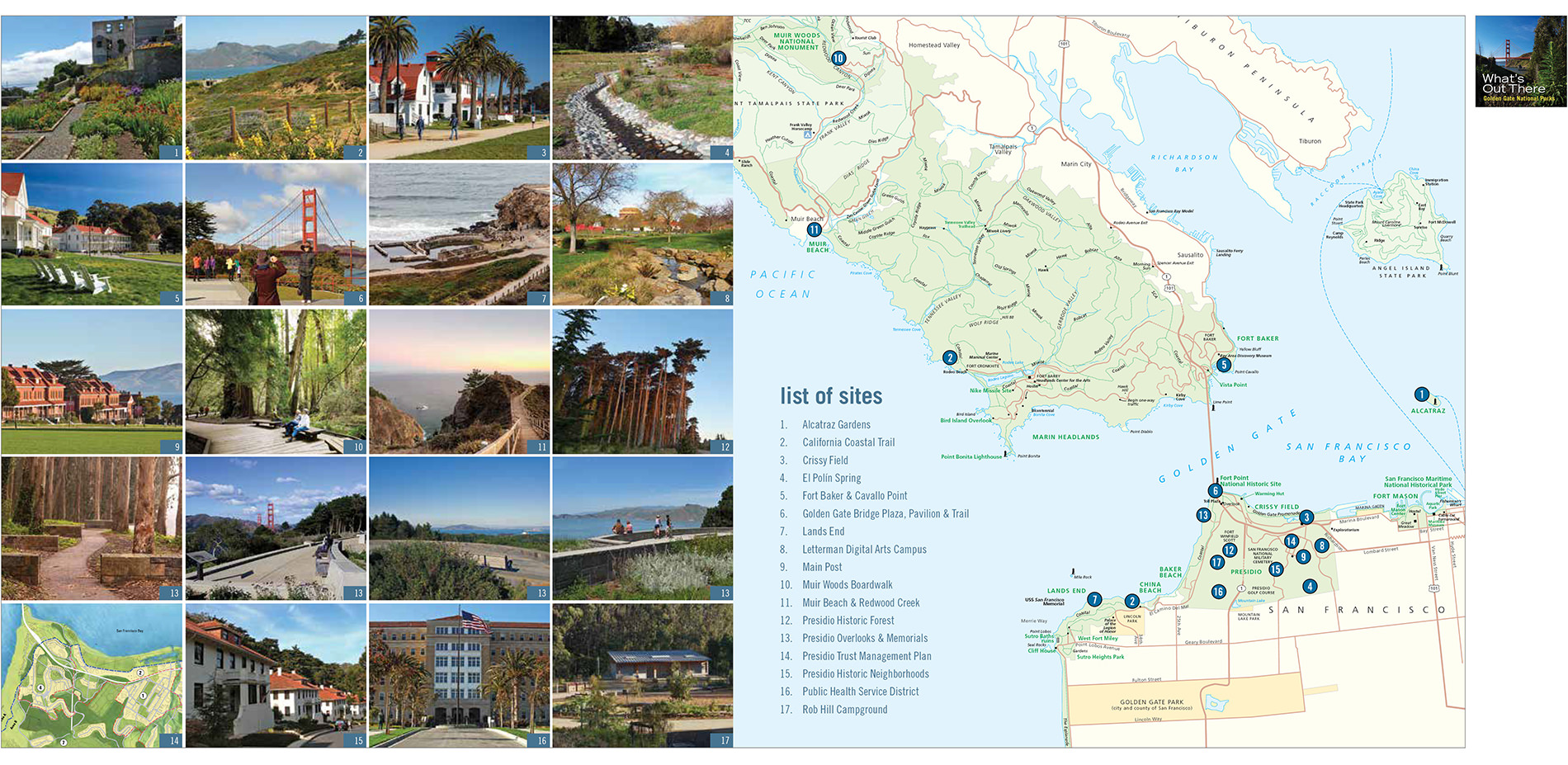
The guidebooks are 8 x 8 inches and easily portable. They include maps, such as this one for San Francisco’s Golden Gate National Parks. The guidebooks can be purchased in print form and downloaded free as PDFs.
Photo Credit: Charles Birnbaum; Barrett Doherty; Mark Oviatt, Oviatt Media
Media: Please submit high-resolution image requests to images@asla.org.
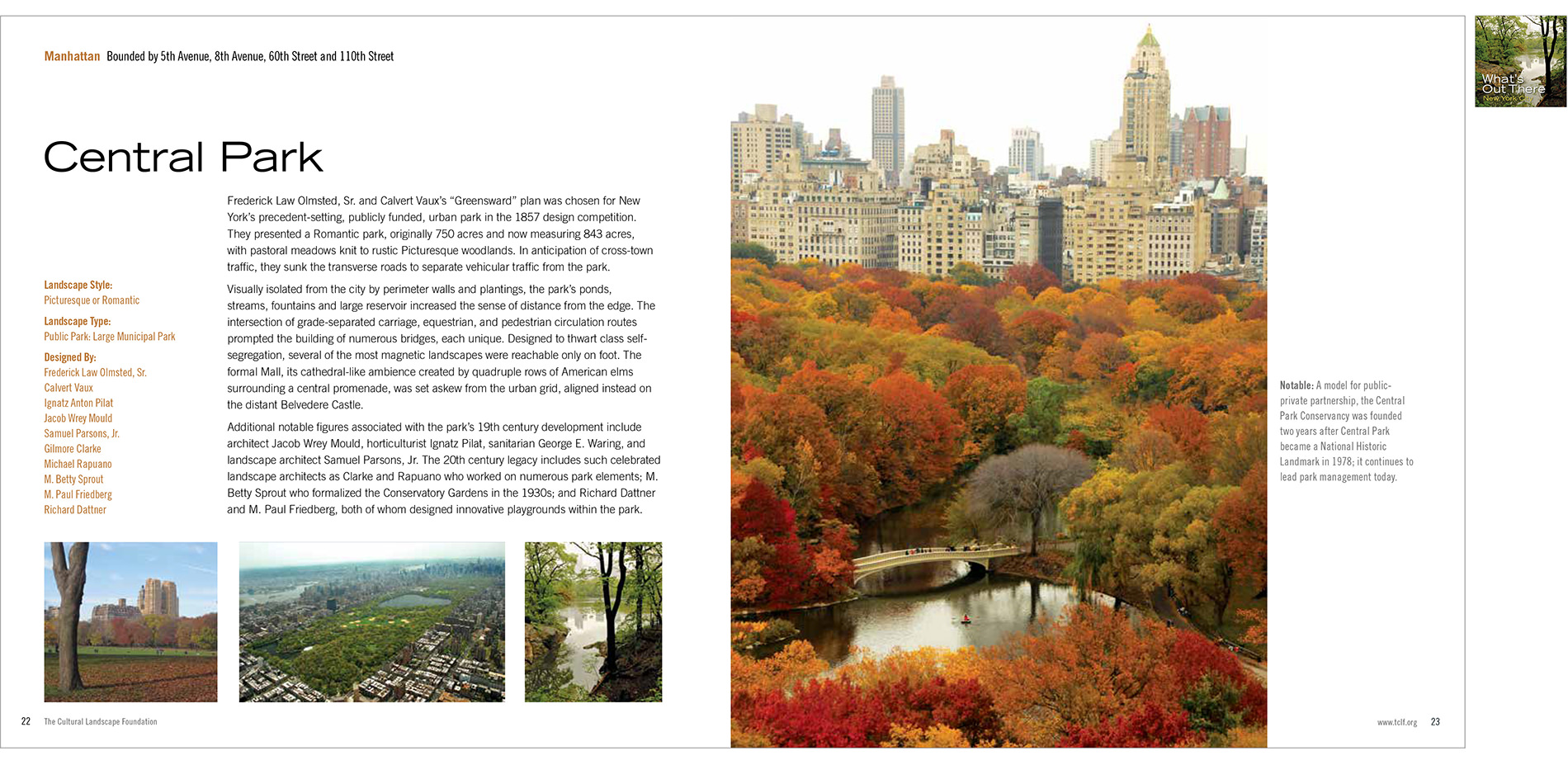
The What’s Out There guidebooks derive from the What’s Out There online database of the nation’s landscape legacy. Each guidebook entry includes contemporary photographs and concise, vetted 250-word site descriptions that include the landscape type, style and associated designer(s).
Photo Credit: Charles Birnbaum; Barrett Doherty; Mark Oviatt, Oviatt Media
Media: Please submit high-resolution image requests to images@asla.org.
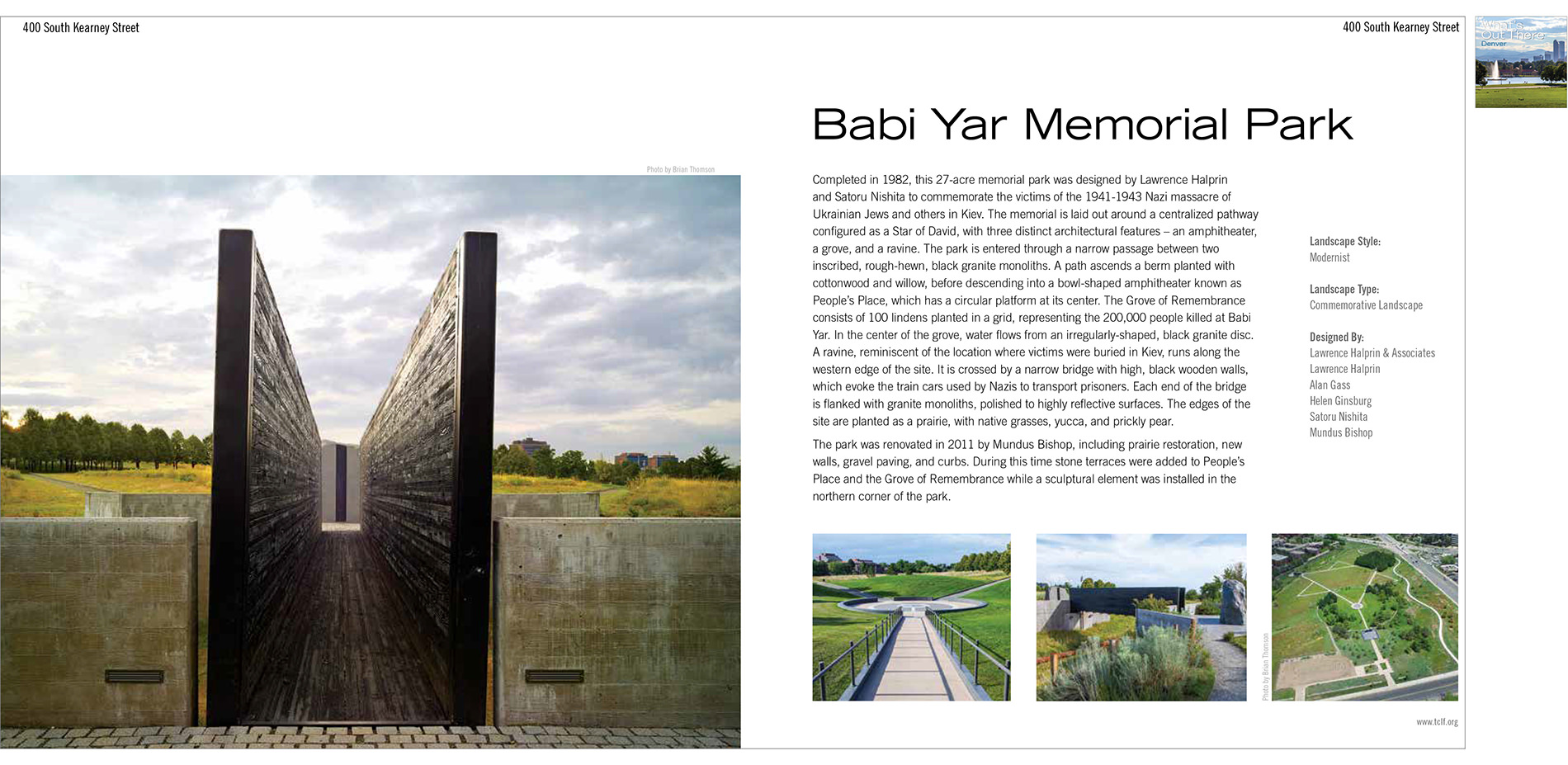
Landscapes in the guidebooks are divided into 27 types (e.g. Park), 49 sub-types (e.g. Vest Pocket Park) and 15 styles (e.g. Modernist); the Babi Yar Memorial Park, shown above, is an example of a Modernist style Commemorative Landscape type.
Photo Credit: Charles Birnbaum; Barrett Doherty; Mark Oviatt, Oviatt Media
Media: Please submit high-resolution image requests to images@asla.org.
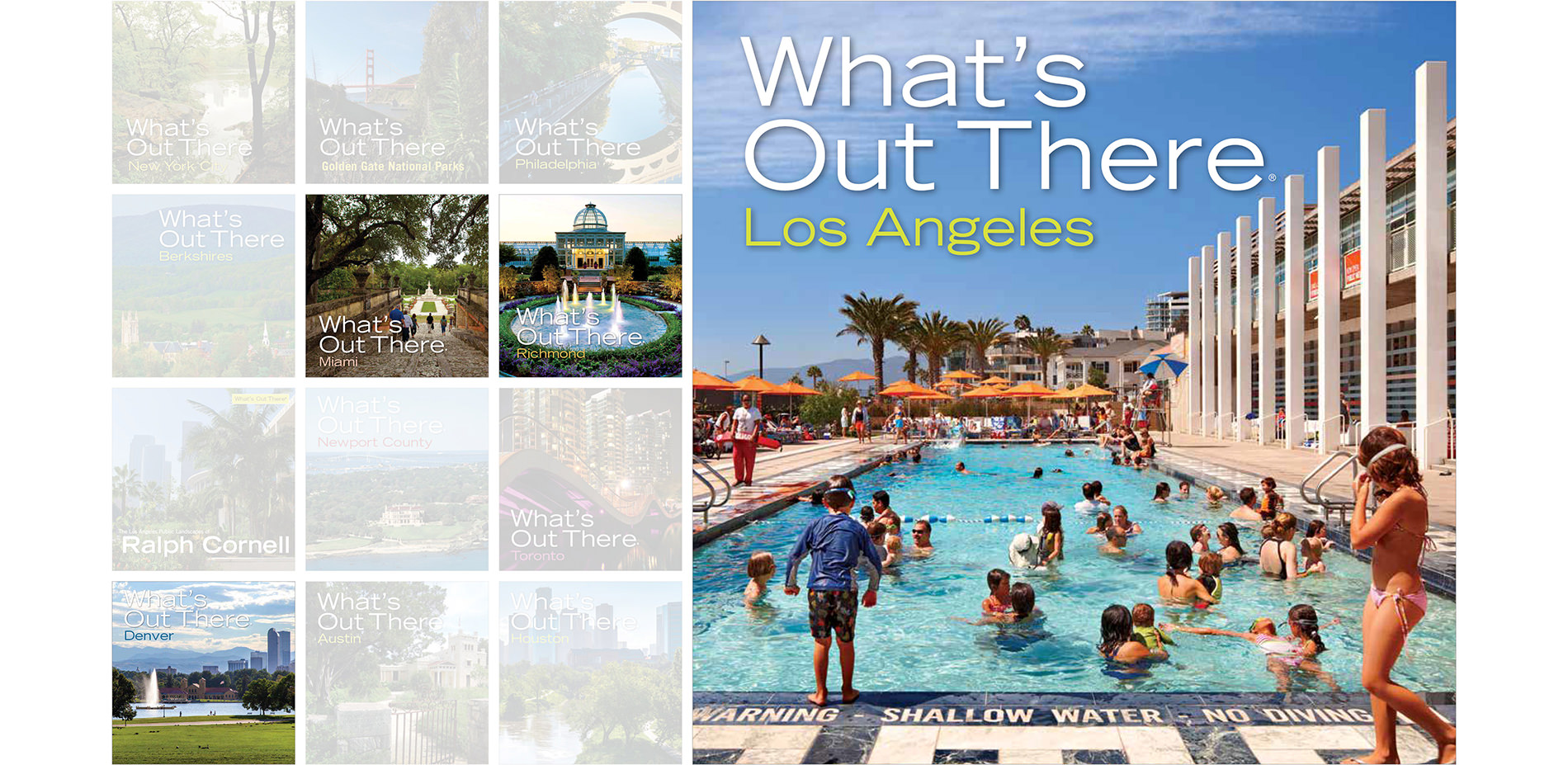
Some guidebooks introduce and define specific styles: the Los Angeles guidebook highlighted Postmodernist works; the Miami guidebook featured Mediterranean landscapes; the Richmond book noted Colonial Revival sites; and Denver addressed Naturalistic or Cohesive landscapes.
Photo Credit: Charles Birnbaum; Barrett Doherty; Mark Oviatt, Oviatt Media
Media: Please submit high-resolution image requests to images@asla.org.
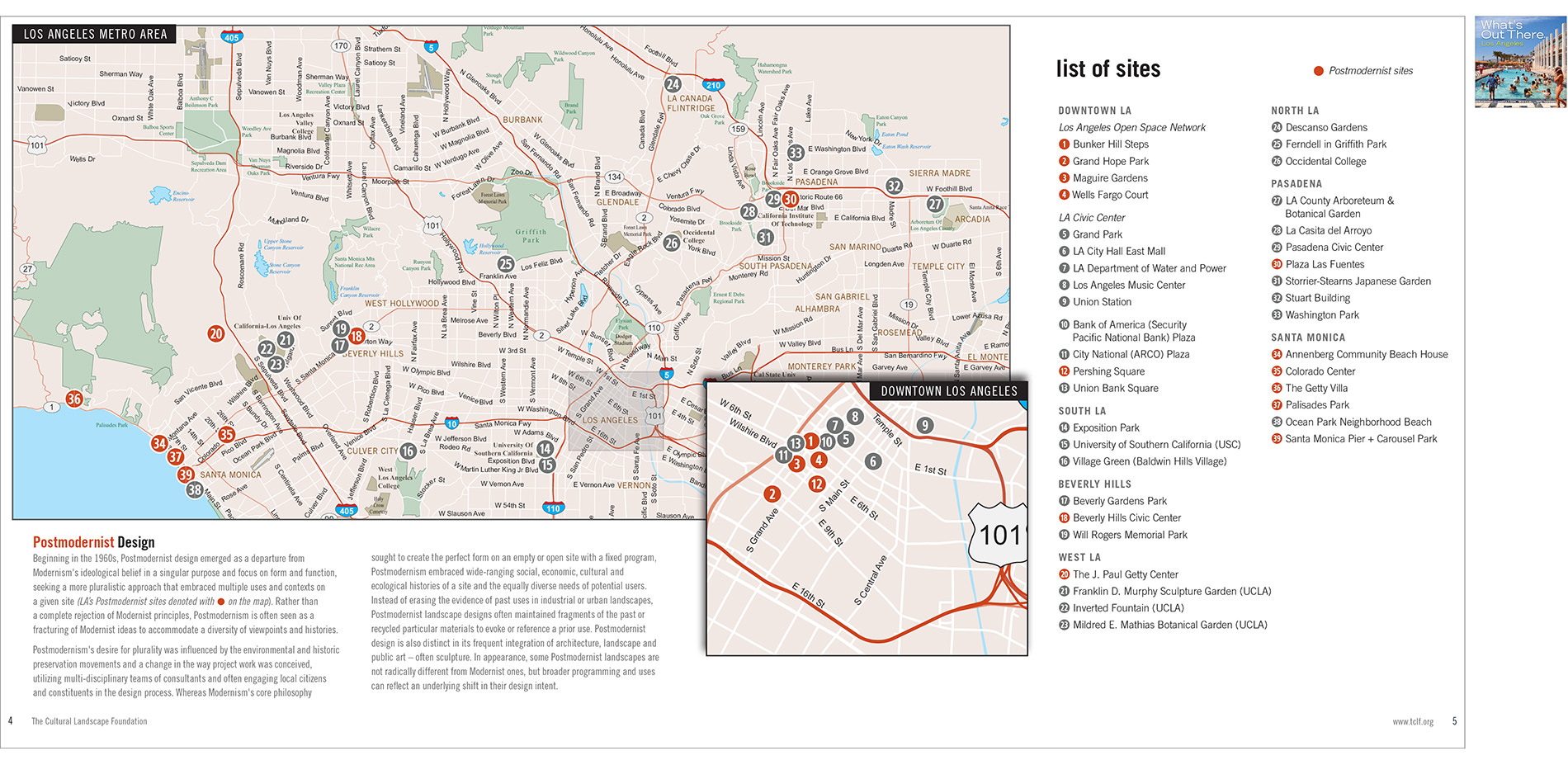
The Los Angeles guidebook includes a definition of the Postmodernist landscape style and maps with color-coded sites designed in this style.
Photo Credit: Charles Birnbaum; Barrett Doherty; Mark Oviatt, Oviatt Media
Media: Please submit high-resolution image requests to images@asla.org.
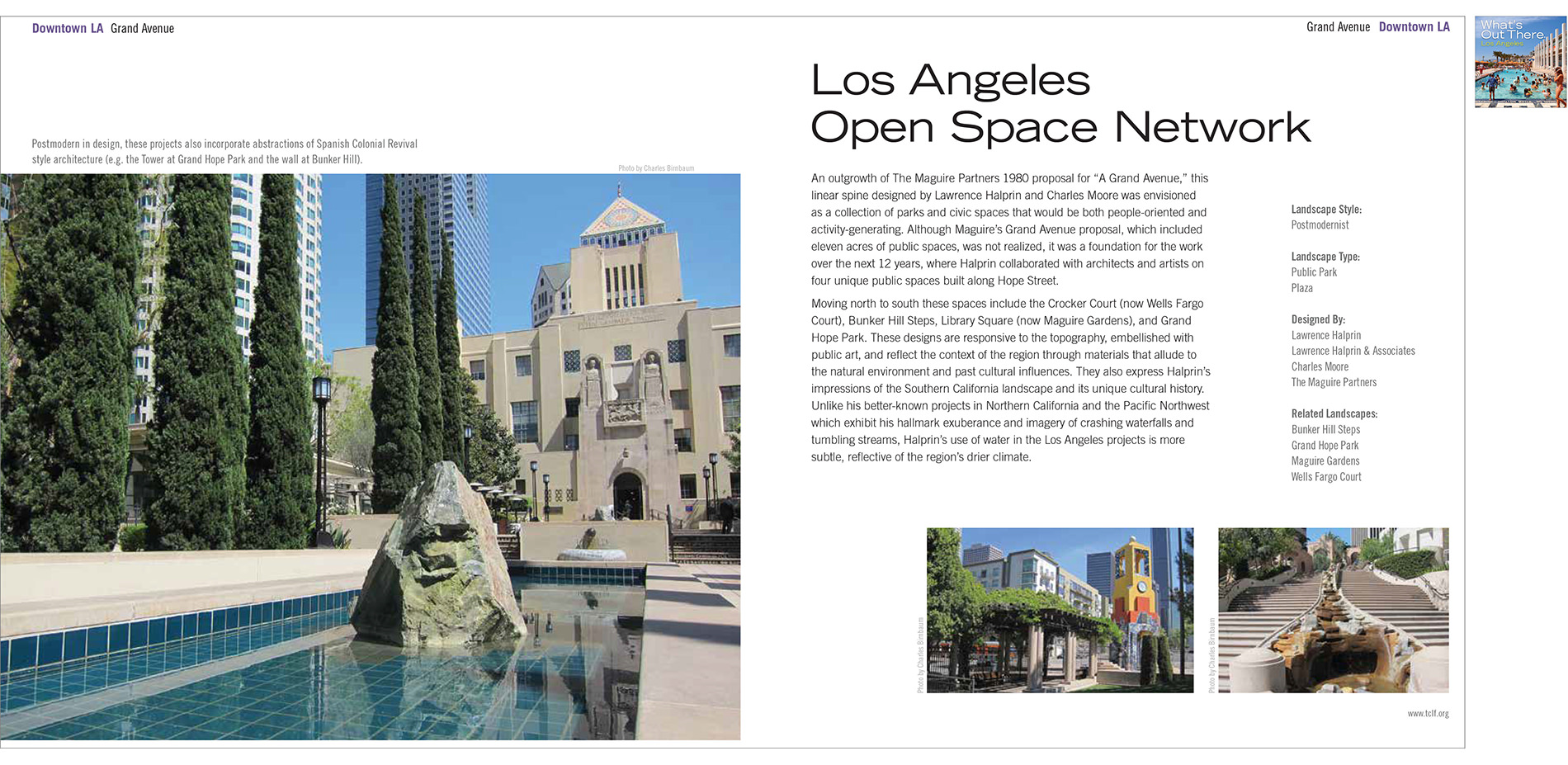
This entry from the Los Angeles guidebook discusses an ensemble of Postmodernist landscapes in the city’s downtown, and introduces four specific sites that are addressed in subsequent pages.
Photo Credit: Charles Birnbaum; Barrett Doherty; Mark Oviatt, Oviatt Media
Media: Please submit high-resolution image requests to images@asla.org.
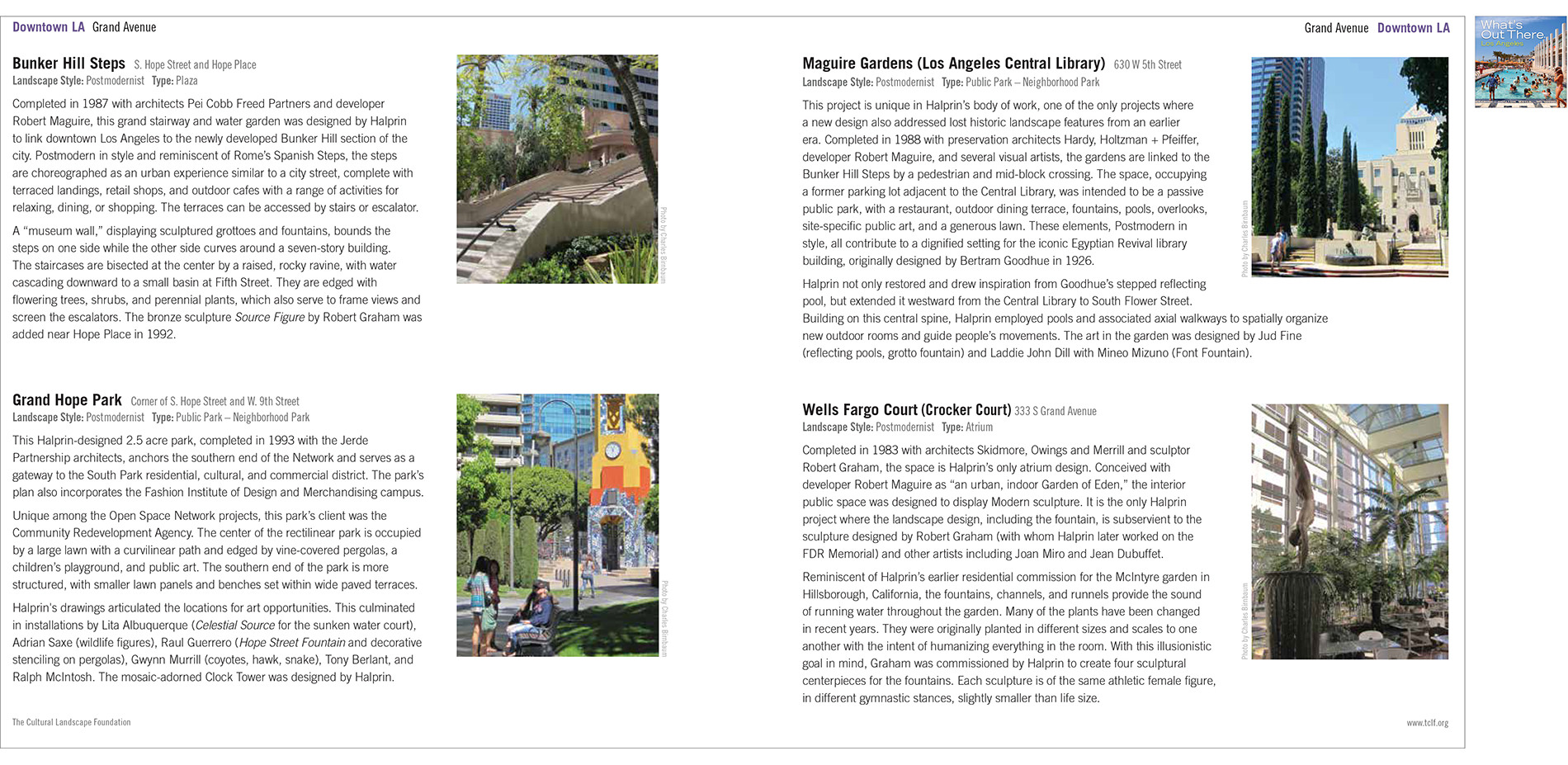
This entry outlines the four Postmodernist sites in Los Angeles introduced in the previous entry.
Photo Credit: Charles Birnbaum; Barrett Doherty; Mark Oviatt, Oviatt Media
Media: Please submit high-resolution image requests to images@asla.org.
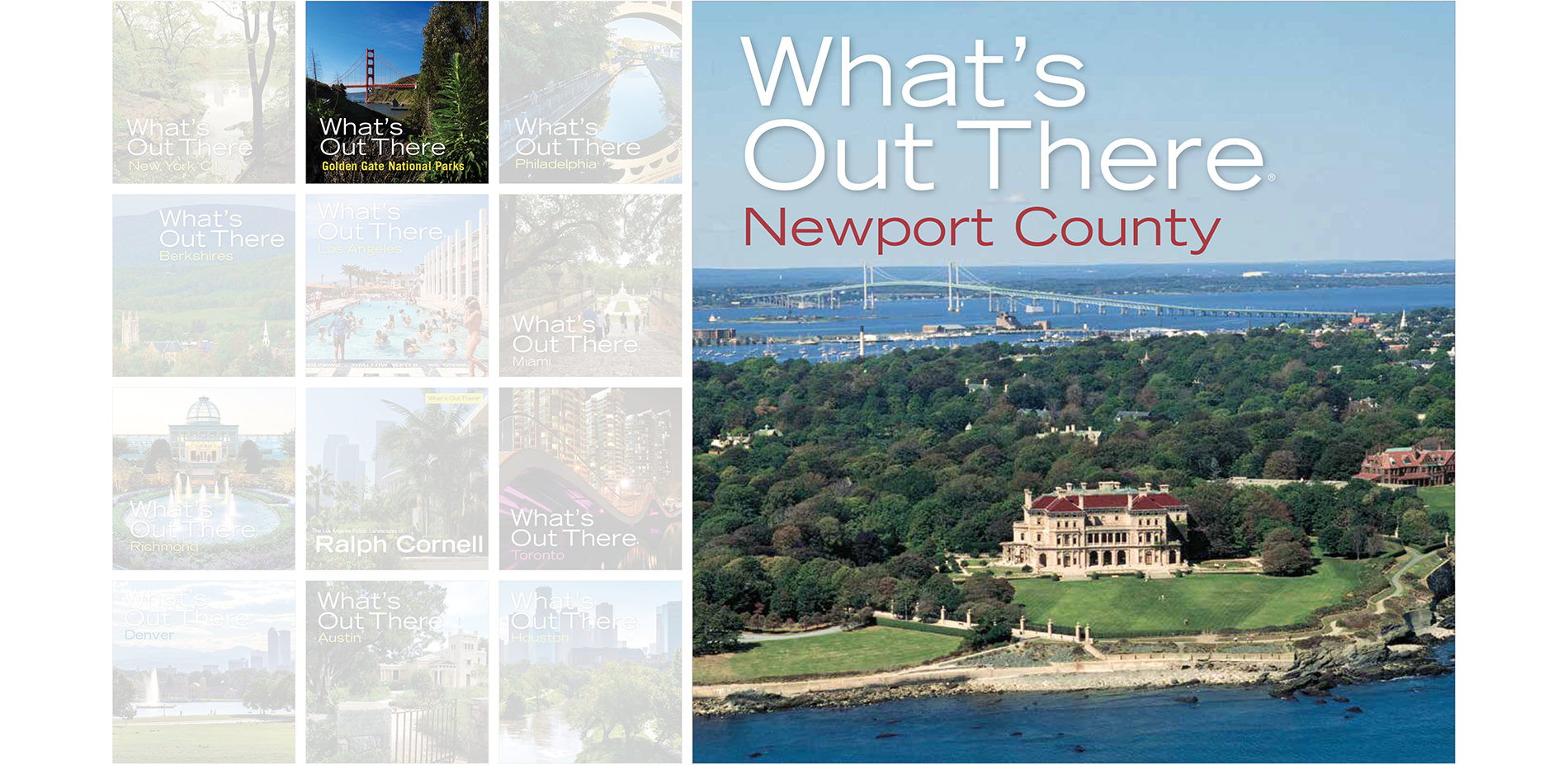
The guidebooks for Newport, RI, and the Golden Gate National Parks include histories of each destination.
Photo Credit: Charles Birnbaum; Barrett Doherty; Mark Oviatt, Oviatt Media
Media: Please submit high-resolution image requests to images@asla.org.
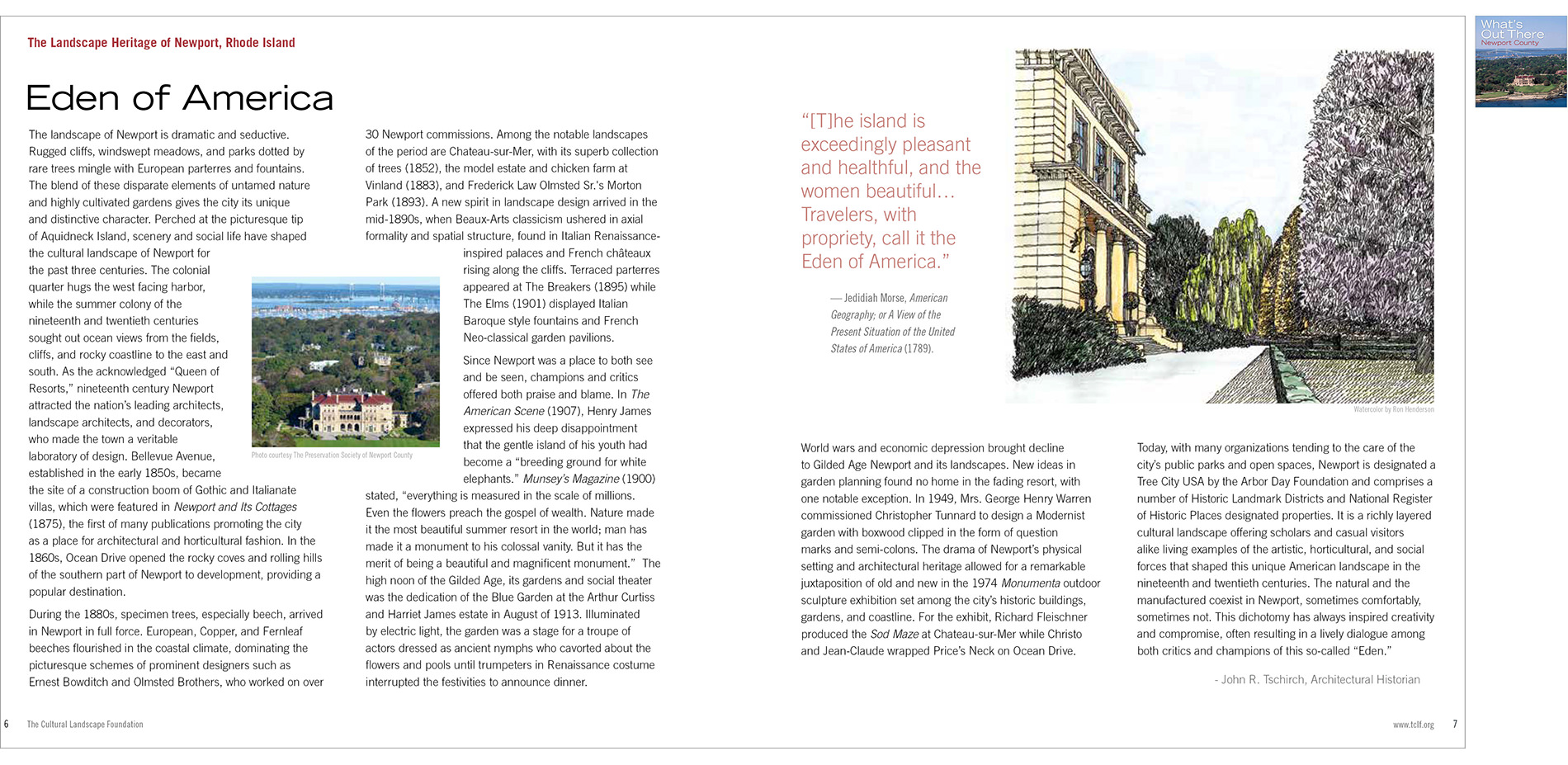
This history of Newport, RI, written by an architectural historian, provides an overview of the site’s settlement, some of the designers who shaped it, and other colorful details that provide needed context.
Photo Credit: Charles Birnbaum; Barrett Doherty; Mark Oviatt, Oviatt Media
Media: Please submit high-resolution image requests to images@asla.org.
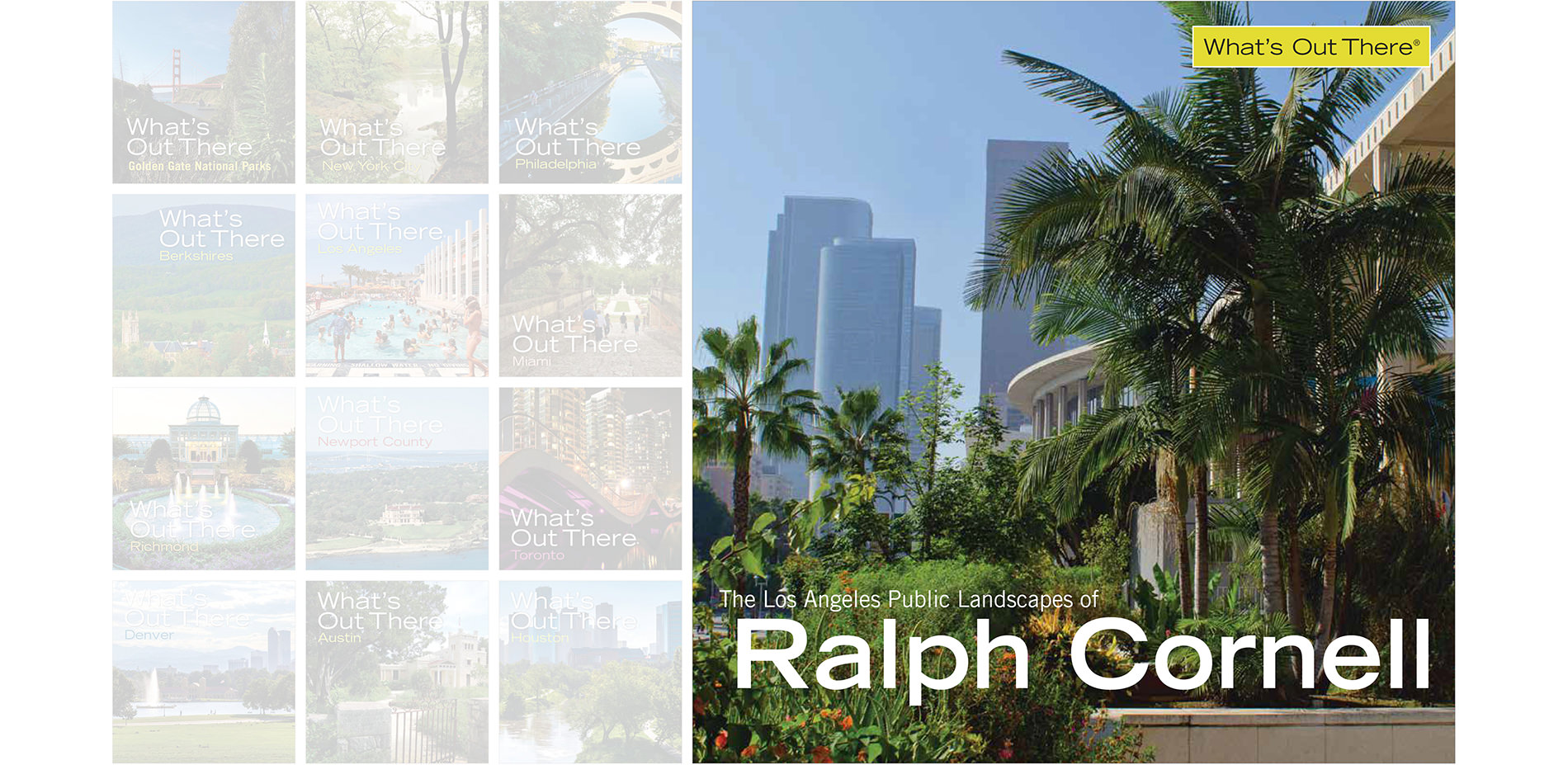
What’s Out There: The Los Angeles Public Landscapes of Ralph Cornell is the first guidebook dedicated to a specific practitioner.
Photo Credit: Charles Birnbaum; Barrett Doherty; Mark Oviatt, Oviatt Media
Media: Please submit high-resolution image requests to images@asla.org.
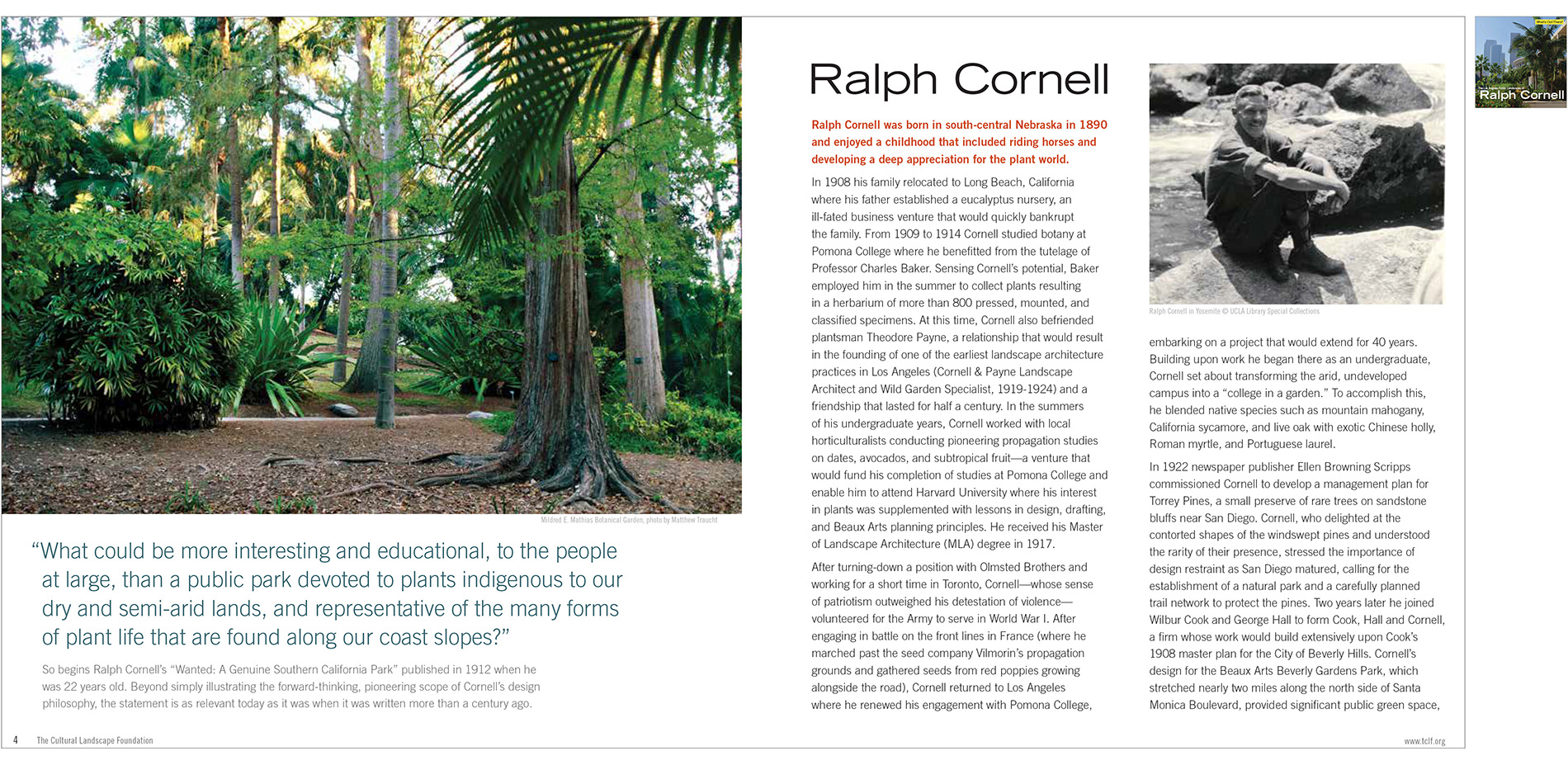
The Cornell guide contains a biography of the practitioner who was known as the “Olmsted of LA.”
Photo Credit: Charles Birnbaum; Barrett Doherty; Mark Oviatt, Oviatt Media
Media: Please submit high-resolution image requests to images@asla.org.
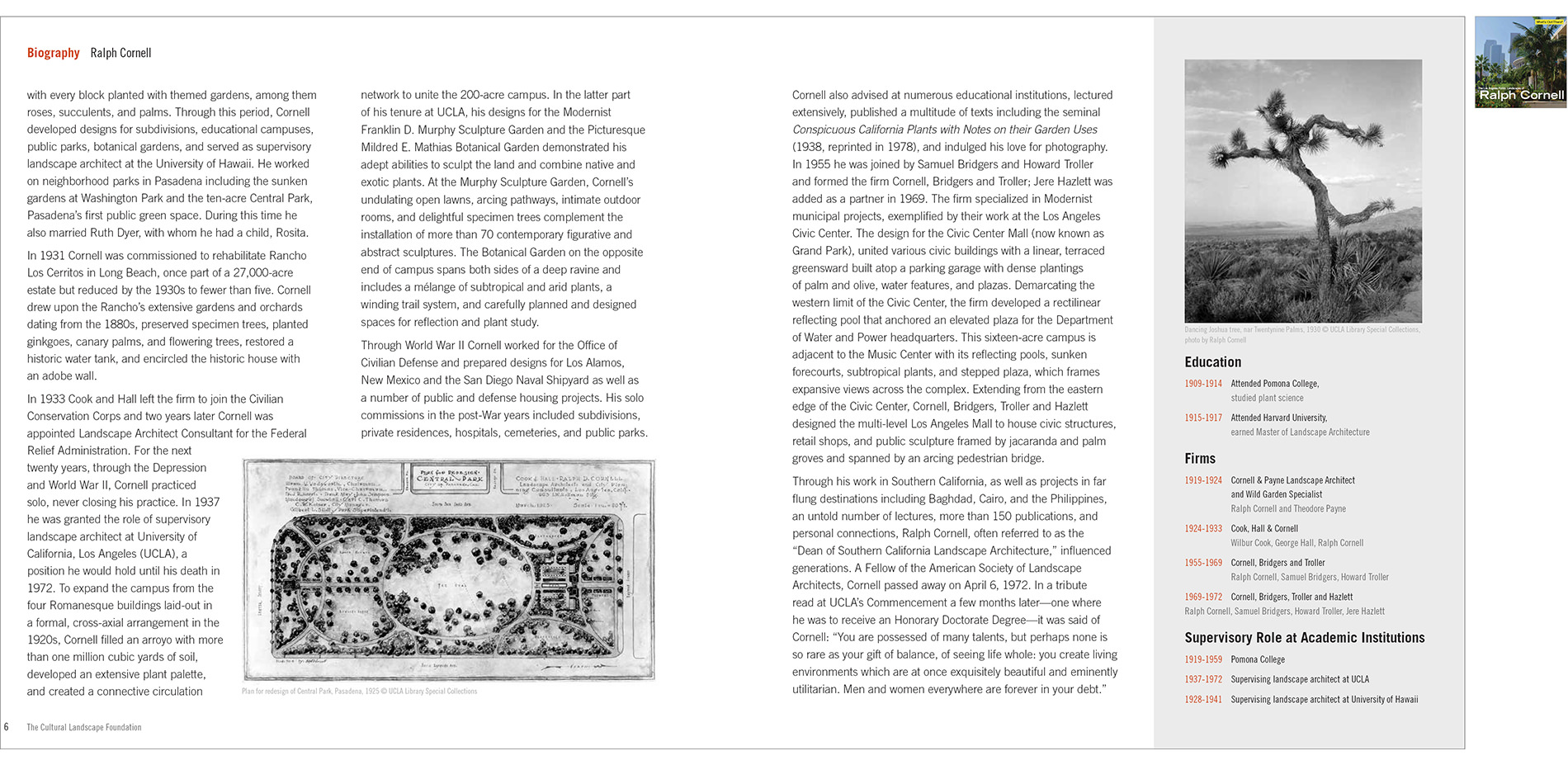
The Ralph Cornell biography is supplemented by a sidebar that highlights his academic and professional accomplishments.
Photo Credit: Charles Birnbaum; Barrett Doherty; Mark Oviatt, Oviatt Media
Media: Please submit high-resolution image requests to images@asla.org.
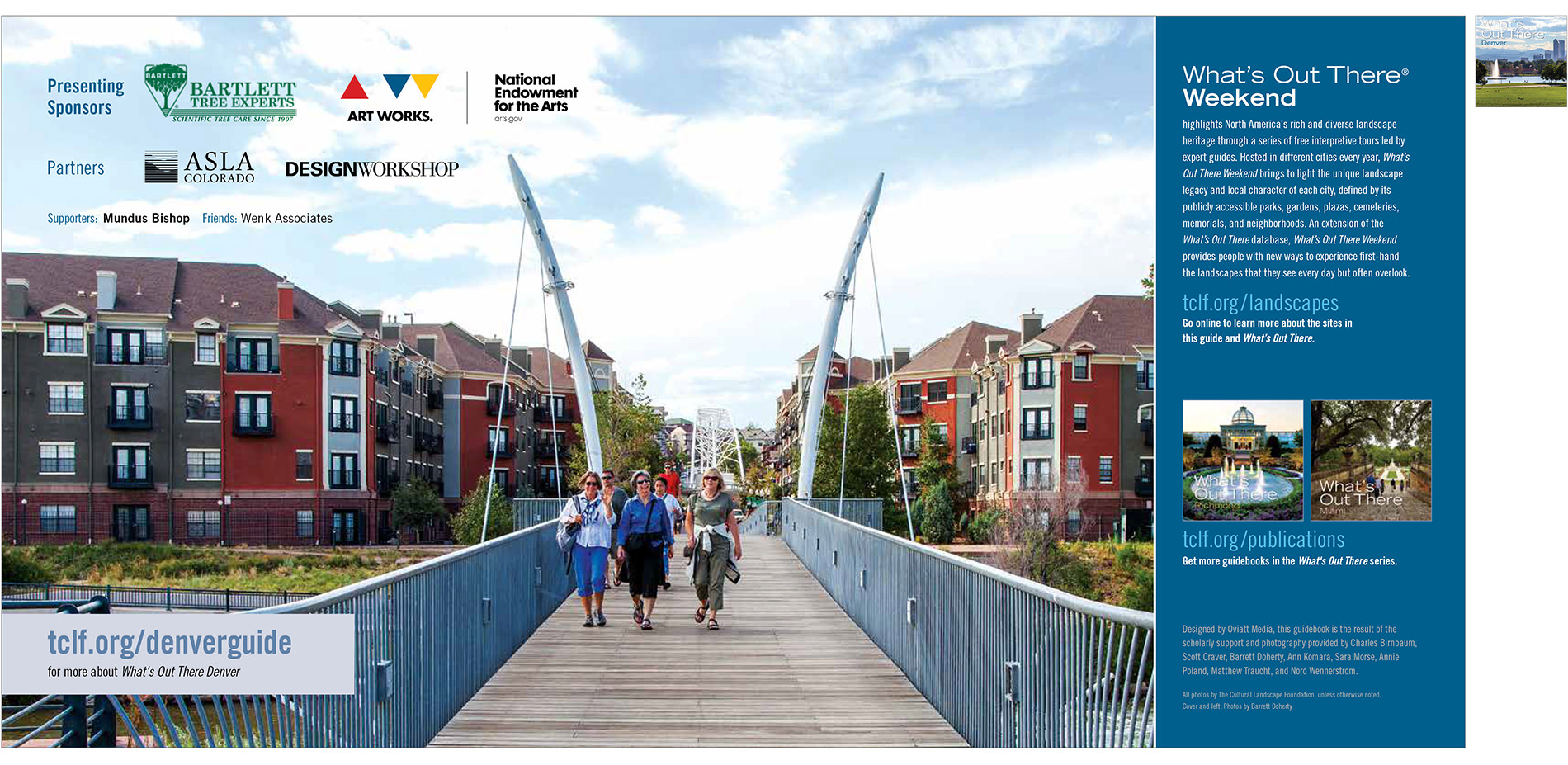
The guidebooks are issued in tandem with What’s Out There Weekend free, expert-led tours. The weekend is described (upper right) and there are URLs for additional content. Guidebook Presenting Sponsors and Partners are recognized with logos.
Photo Credit: Charles Birnbaum; Barrett Doherty; Mark Oviatt, Oviatt Media
Media: Please submit high-resolution image requests to images@asla.org.

















